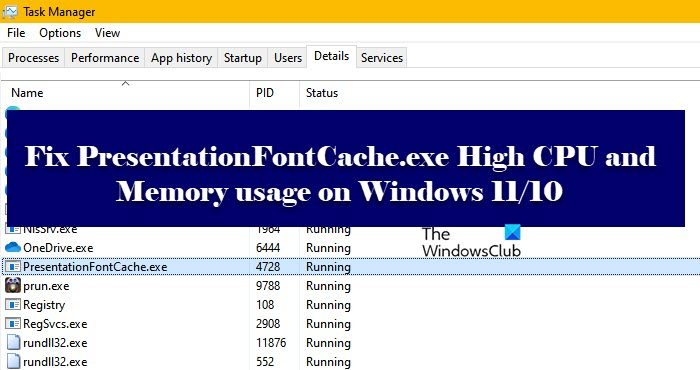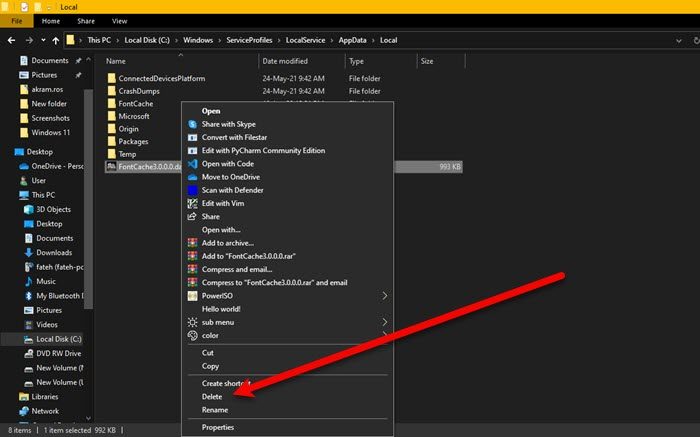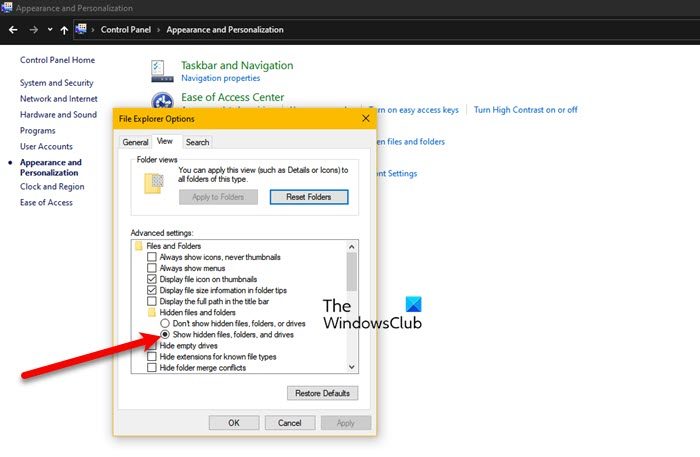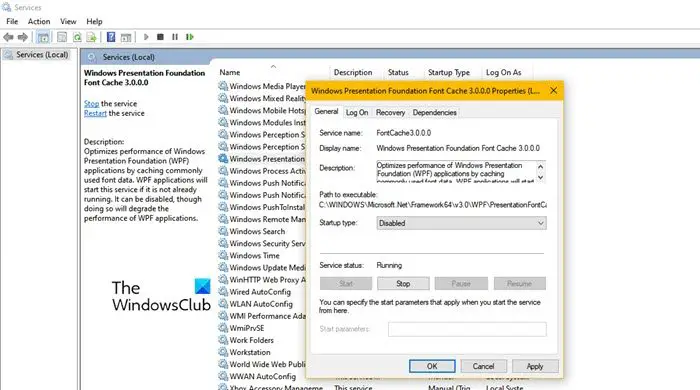Some users are complaining that a process called PresentationFontCache.exe is consuming high resources on their Windows 11/10 computers. According to them, when they started probing they saw that PresentationFontCache.exe is causing high CPU and Memory usage in their Task Manager. In this article, we are going to see how you can resolve the issue.

What is PresentationFontCache.exe?
PresentationFontCache.exe is a file associated with .NET Framework and is used to load font for Windows Presentation Foundation Applications. When using such apps, the process is triggered. However, this doesn’t mean that users who don’t use WPF applications will never experience PresentationFontCache.exe high CPU usage, there are a lot of reasons that can trigger this process.
The best-case scenario is a glitch. The glitch can trigger the process and it ends up consuming all the resources of your computer. These can be resolved by restarting the computer, also, if you can stop the service that’s starting the process, PresentationFountCache.exe will not take a huge chunk of your CPU and Memory. The worst-case scenario is a corrupted file. We will talk about them as well.
Before troubleshooting, we would recommend you stop the process. To do that, you can right-click on the process and click End Task. This is a workaround or one can say temporarily fix as the process can pop up and start taking your resources.
Fix PresentationFontCache.exe High CPU and Memory usage
If you are experiencing PresentationFontCache.exe high CPU and Memory usage on your computer, check out the following solutions to resolve the issue.
- Restart your computer
- Delete Font*.dat or FontCache 3.0.0.0.dat file
- Stop Windows Presentation Foundation Font Cache Service
- Repair .NET Framework
Let us talk about them in detail.
1] Restart your computer
You should start troubleshooting by restarting your computer. This way, if there are some programs that could have triggered the process will be closed. So, do that and check if the issue persists.
2] Delete Font*.dat or FontCache 3.0.0.0.dat file

The issue can appear because of the Font*.dat or FontCache 3.0.0.0.dat file. This file can get corrupted and as a result, interfere with your computer triggering the process.

However, before that, we are going to make it visible. Follow the given steps to do the same.
- Open Control Panel.
- Click Appearance and Personalization > File Explorer Options. Or just search out “File Explorer Options”.
- Go to the View tab and select Show hidden files, folders, or drivers from Hidden files and folders.
- Then click Apply > Ok.
Then open File Explorer and go to the following location.
C:\Windows\ServiceProfiles\LocalService\AppData\Local
Now, right-click on FontCache 3.0.0.0.dat or Font*.dat and select Delete. Then restart your computer and check if the issue persists.
3] Stop Windows Presentation Foundation Font Cache Service

If you don’t want to delete anything then try disabling the service and see if that works. Follow the given steps to do the same.
- Open Services from the Start Menu.
- Look for Windows Presentation Foundation Font Cache 3.0.0.0.
- Right-click on the service, set the Startup type to Disabled, and click Stop.
- Click Apply > Ok.
You should know that if you disable this Service, then it may degrade the performance of WPF applications that you are running on your computer – and so as such this can only be a temporary measure.
4] Repair Microsoft .NET Framework
As mentioned earlier, the process that’s taking your resources is related to .NET Framework. So, maybe it can be corrupted and as a result, you are seeing the issue. Therefore, you should repair .NET Framework and see if that works.
Hopefully, you are able to resolve the issue with these solutions.
Is PresentationFontCache.exe a virus?
No, PresentationFontcache.exe is not a virus or malware. It’s an important file and is used by Windows Presentation Foundation Applications. And if you are seeing that it’s running in the background then this means that the process is at work. However, if you are still concerned about a virus infecting your computer, then try checking for viruses and malware. If you have a third-party antivirus then deploy it and your issue will be resolved. You can also use Windows Firewall to check for malicious files. Follow the given steps to do the same.
- Open Windows Security from the Start Menu.
- Go to Virus & threat protection > Scan options.
- Select Microsoft Defender Offline scan > Scan now.
Wait for the process to complete and hopefully, your issue will be resolved.
Read: